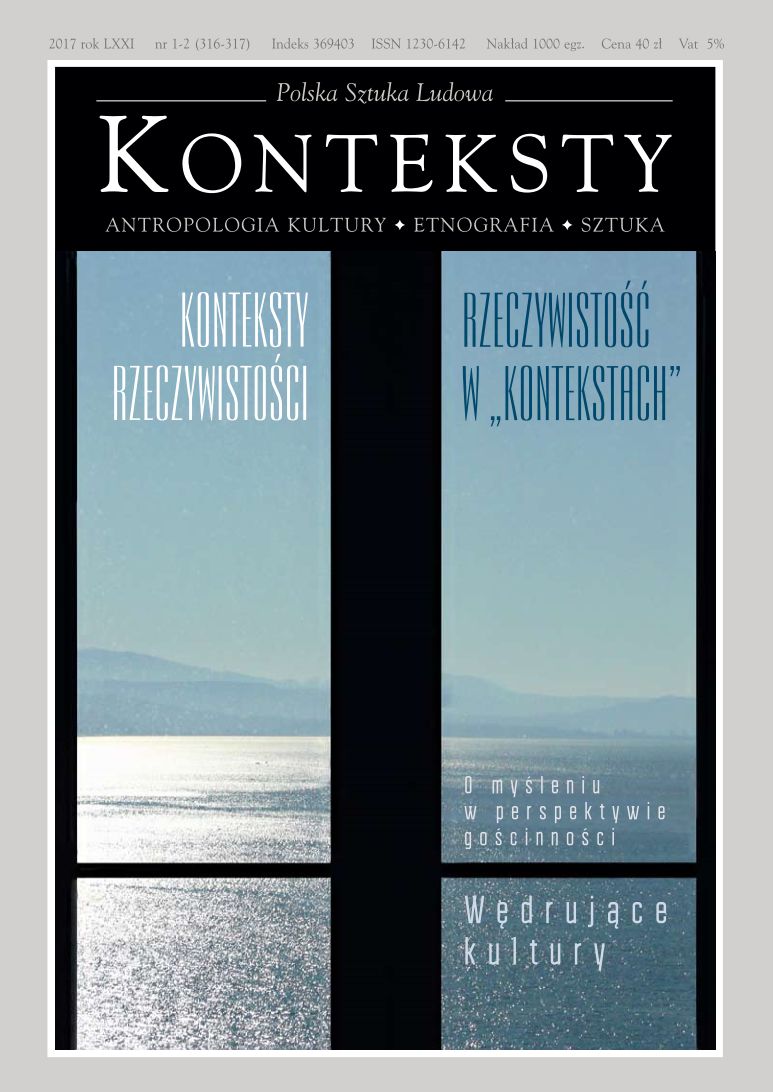Antropologia pieśni ludowej. O spektaklu Do Dna
Anthropology of the Folk-Song. About the Performance Do DNA
Author(s): Włodzimierz SzturcSubject(s): History, Social Sciences, Fine Arts / Performing Arts
Published by: Instytut Sztuki Polskiej Akademii Nauk
Keywords: theatre;anthropology;
Summary/Abstract: The article is an attempt to present the most significant phenomena in the area of human culture. Its main subject are ritual behaviours and gestures. The author sees the ethnoscenological method as a vehicule for presentation of procesess, matters and phenomena of their dynamic changeability as well as an innovation resulting from introduction of tools, music and songs as a communication systems whitin the performence. The most significant isues in the group of messages are ritual, ceremony and festive spectacle which, being the repetable rituals, become the basis of a theatre performence DO DNA. All is crowned with the entrance in the culture of modern Europe which brought all great rituals of the past to the cammon denominator of carnavalisation and devisted them of the divine inspiration. In the place of divinity of ancient ritual comes modern theatre as the sacrifical substitution of ritual. Thus the cults of vegetation and rebirth of the nature as well as the ceremony of mariage and funeral became the basis of the theatre as a tranfer of the ritual into the quasiritual order of sacrifical substitution of the sacrifice and the touch of the secret death. Even so Victor Witter Turner’s comments about the inability of performance’s define (nowadays it became ethnic, anti-historical spectacle, or even a sport or political game/entertainment - From ritual to theatre: the human seriousness of play,1982) and at the same time led us to the reflection, that the return to sings-archetypes of the primary matrix of performance, visible in folk songs, first of all their archaic sounds and acoustic landscape could be aim of interest of ethnoscenology.Exactly, Jean-Marie Pradier noted the key of the ethnotheatrological studies (La scène et la fabrique des corps. Ethnoscénologie du spectacle vivant en Occident, (Ve siècle av. J.-C.- XVIIIe siècle, 1997), just the same as Gilbert Rouget, befor, in music studies (Questions posées à l’ethnoscénologie, 1995.).As a linkage of those two research practice, namely the intercultural ethnoscenology and ethnomusicology, the basis of new specialization in theatre studies can be noticed. The “archeofonia”, which is not a kind of reconstruction, but discovering primary, original sounds of emotion and affects. They are like a genetic D.N.A. code of behavior (motive and acoustical) inherited due the spectacle. The source of this studies are folk songs.
Journal: Konteksty
- Issue Year: 316/2017
- Issue No: 1-2
- Page Range: 312-322
- Page Count: 11
- Language: Polish
- Content File-PDF

